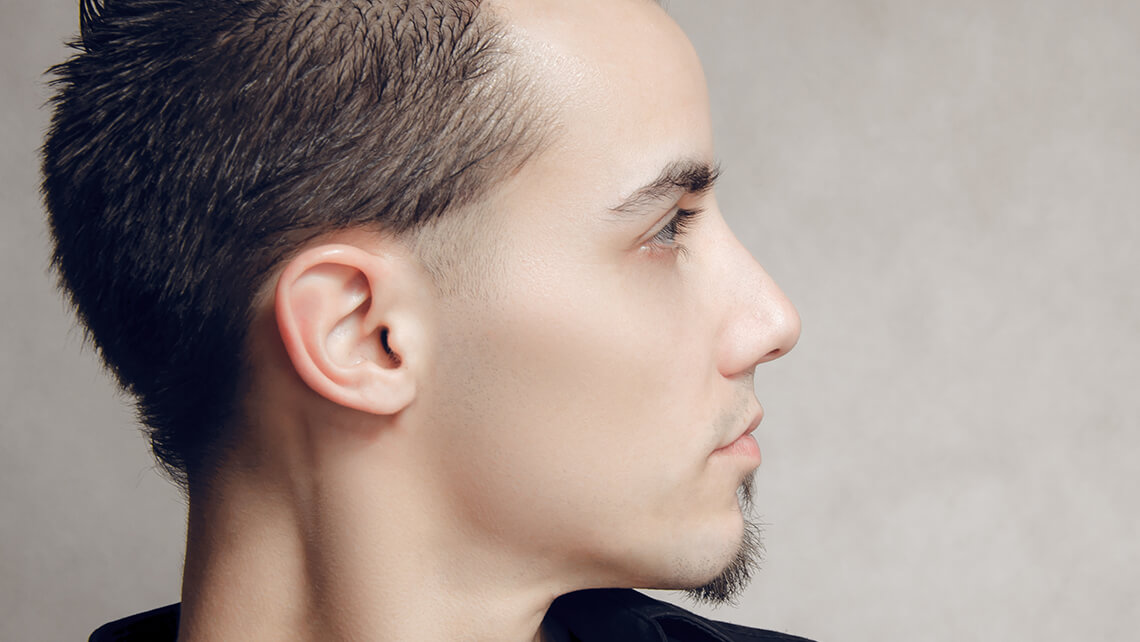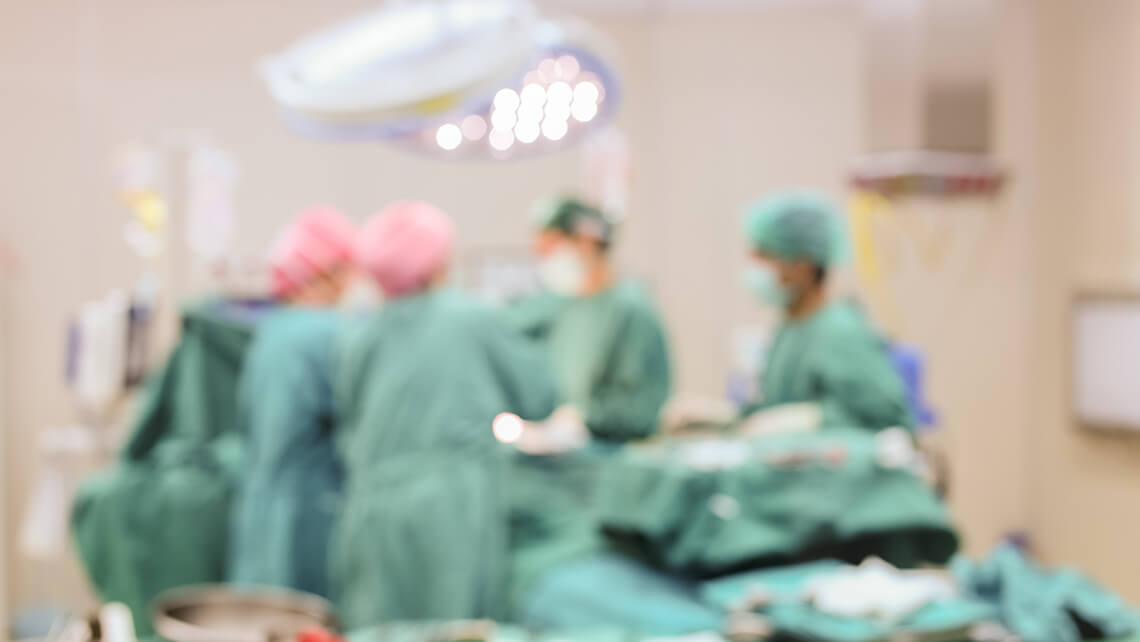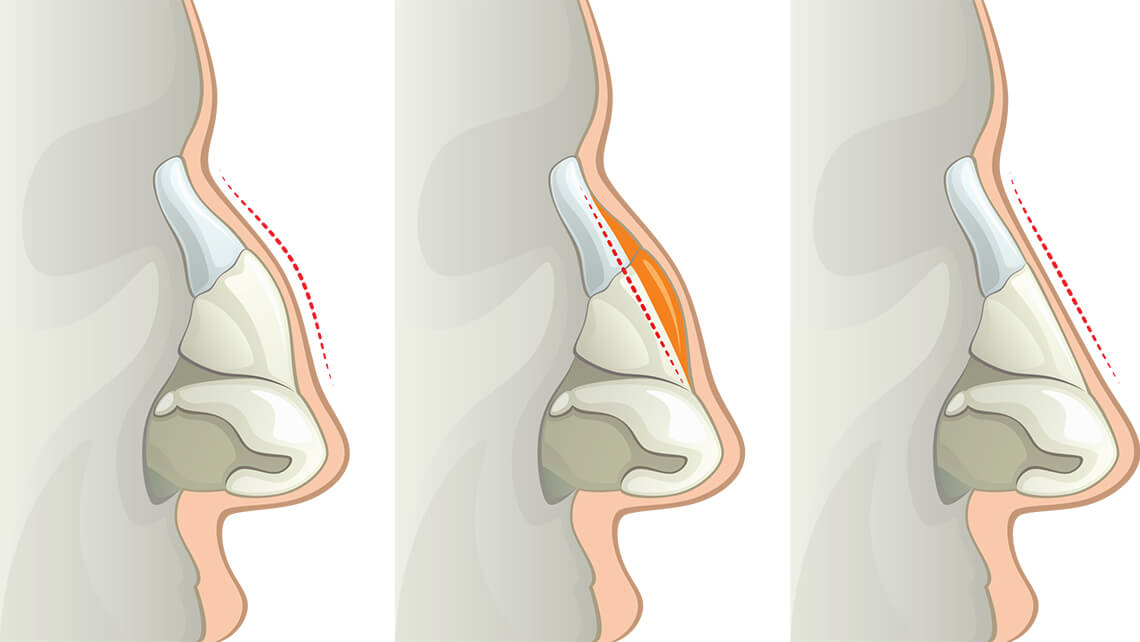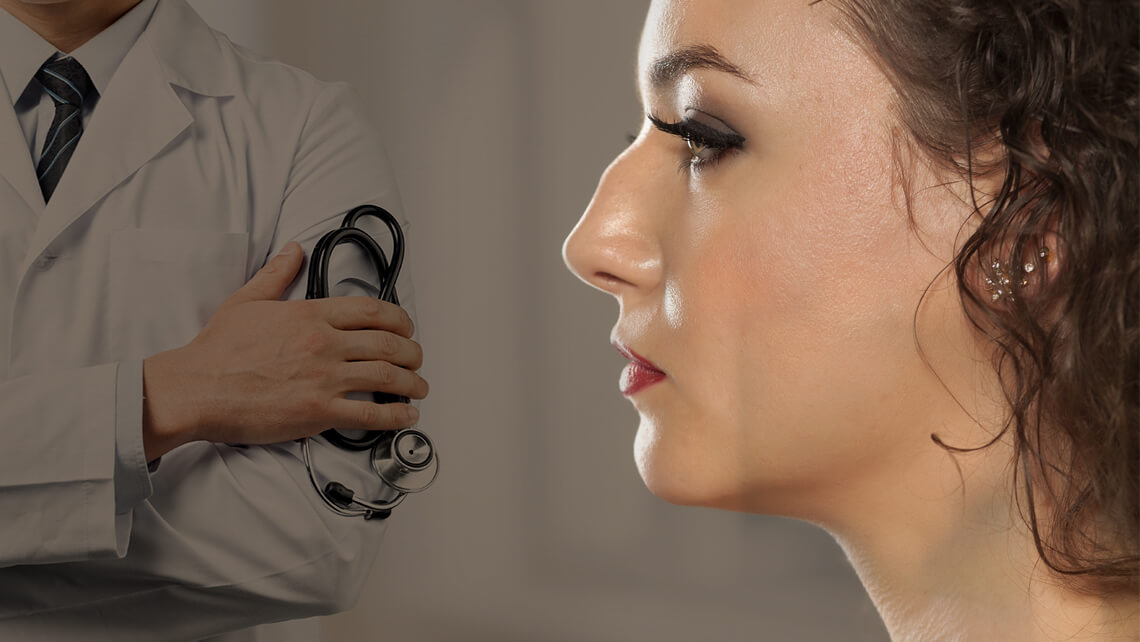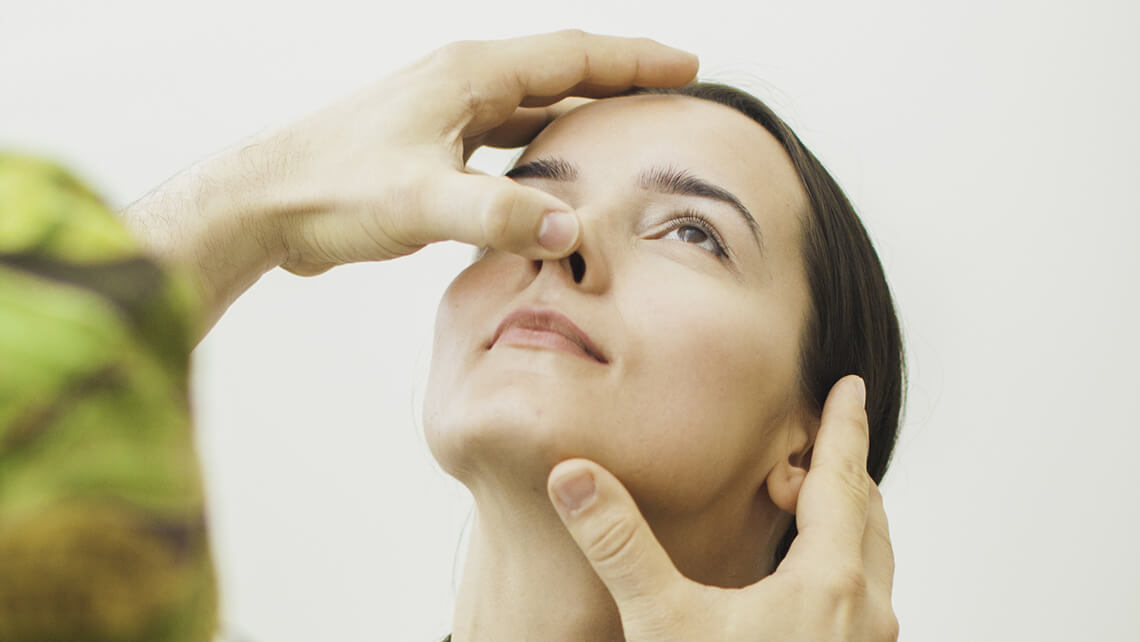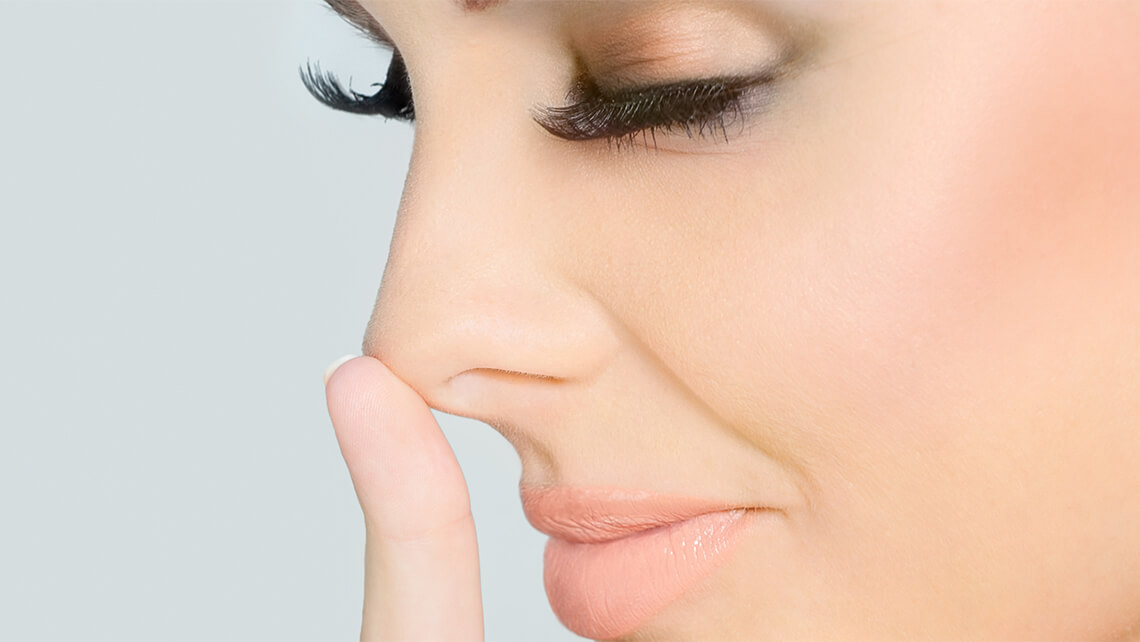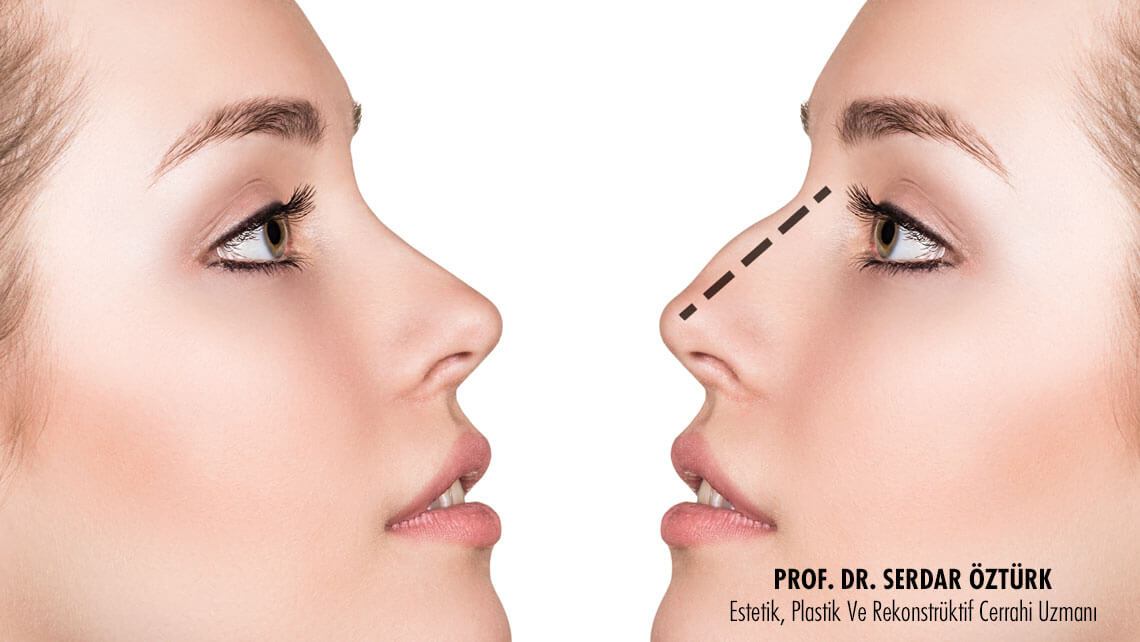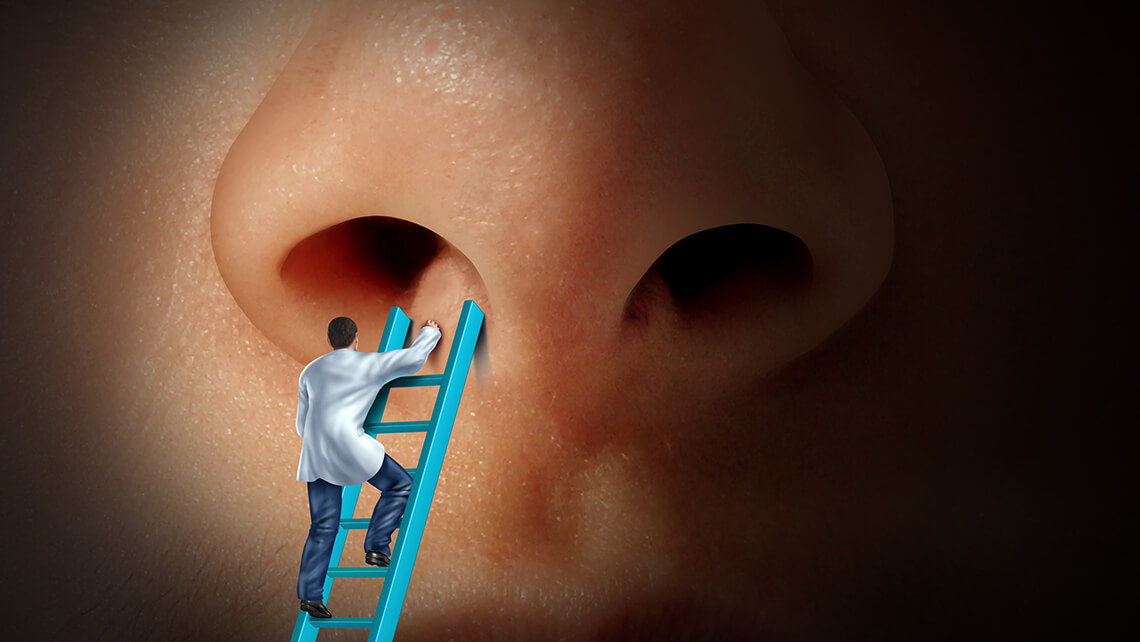Importance of rhinoplasty: It is certain that the desire of human beings to change their external appearance goes back to ancient times. In addition to actions such as dressing, hair styling, shaving, and putting on make-up, people have begun to want surgical changes in their appearances, as a result of the development of surgical practices which have made surgical procedures safer.
Plastic Surgery, as a branch of science, has been trying to correct the deformities of the human body for centuries. The first surgical operations intended to change the appearance, known in history, were performed in India in the 2000s BC, i.e. about 4,000 years ago. In Ancient India, criminals’ noses were cut off as punishment for theft according to some sources, and for adultery according to some others. An Indian surgeon named “Sushruta Samhita” tried to make noses for people whose noses had been cut off, by using a flap of skin taken from the forehead. We do not know how successful could Sushruta Master be in those days when anesthesia could not be performed, antibiotics were not available, and no one even knew about the existence of microbes. However, it is well known by everybody that today's plastic surgeons solve all kinds of aesthetic and functional problems in the nose using much more advanced technologies.

Nose job, or “rhinoplasty” with its medical name, is one of the most common plastic surgeries in our country and abroad, so much so that almost everyone knows someone in their close circle, who has had a rhinoplasty operation. The prevalence of nasal deformities in our country certainly has a role in the fact that rhinoplasty is performed so commonly in our country. However, the nose located in the middle of our face is an organ that has very important responsibilities with its aesthetic appearance and functions. Therefore, aesthetic problems in this organ are highly noticeable, and correction of their defects is much more demanded compared to correction of defects in any other organs.
The nose is one of the most interesting organs in the human body, because its back is in the front, its top is in the bottom, its root is at the top, and its wings are in the lower part. It is the first control point where the air we inhale is warmed and purified from dust. It also enables human beings to perceive 4 thousand different odors and distinguish them from each other. The historian philosopher “Johann Gottfried Seume” wrote that the nose is also a symbol of the spiritual world. “Dahlke” on the other hand described what the nose symbolizes, in his handbook on psychosomatics: “Domination, pride, power, sexuality.” Johann Caspar Lavater, a sociologist and psychologist, stated that beyond being just an organ that performs functions such as breathing and smelling, the nose is a symbol and reflects sexual power. An ugly nose has always been one of the motifs commonly used in literature and painting.
When all these are taken into consideration, the nose seems to have many functions and meanings. Patients dissatisfied with such an important organ should be examined more carefully before operated, and they should be prevented from having unrealistic expectations in particular.
The nose is an organ that attracts too much attention in terms of aesthetic appearance. Traumatic or congenital nasal deformities always attract attention, and people with such problems are mostly exposed to unkind, offensive or mocking behaviors of some people around them. In today’s world, where appearance is very important, it can be really difficult for some people to withstand the psychological pressure caused by an ugly nose. Especially people in their early twenties, whose social life have yet to fully develop, have a stronger desire to change the shape of their nose for social acceptance. After these ages, the trust and balance brought by professional and family lives keep many people away from worrying about problems with their nose. However, if the psychological pressure persists at these ages, then it becomes inevitable for the person to seek a solution with plastic surgery.
If the decision on surgery was made correctly and the surgery was performed in accordance with the technical rules, the positive psychological effect of a surgical procedure intended to correct the nasal defects is greater than that can be provided by all other aesthetic surgeries. In addition to improving one’s self-confidence, a successful rhinoplasty operation usually produces very positive results in professional, family and social lives. This should not be surprising. Scientific studies proving the fact that beautiful and attractive people have a higher chance of success in almost all environments can give us clues about the causes of this positive change.
So, who should have a rhinoplasty operation?
The first condition for being a suitable candidate for nose job, or “Rhinoplasty” as called in medical terminology, is to be over 17-18 years of age, when the nose completes its development. The second condition is to have no health problem that may pose an obstacle to this type of surgeries. The problem can be a disease in the body or organ that makes healing difficult or it can be a mental problem that leads the patient to have obsessions or unrealistic expectations. A person who considers rhinoplasty should not make a hasty decision on this surgical procedure, and should allocate adequate time to think about the issue and select the right surgeon. People making hasty decisions are always more likely to face a bad consequences. You should explain yourself clearly and listen to your physician carefully.
According to the results of a survey conducted with patients who have had plastic surgery, patients mostly complained of not being able to establish an adequate communication with their physician and not being able to feel comfortable when they were with their physicians. “Trust” is a sine qua non in the doctor-patient relationship. Mistrust is often the underlying cause of the inability to feel comfortable in the presence of the physician. A person who decides to have a surgical operation without having adequate information about the surgical procedure to be performed, without establishing good communication with his/her physician, and without feeling fully prepared, tends to give exaggerated reactions to normal problems that he/she may face during the postoperative period; and in general, such patients are difficult to please.
A significant part of those who want to have a rhinoplasty operation also have breathing problems. Inability to breathe easily through the nose can cause problems such as snoring and recurrent throat infection. In most cases of nasal congestion, the main cause is the curvature of the middle part of the nose. The opinion that such curvatures, known as deviations, cannot be corrected during rhinoplasty is no longer acceptable. Performing procedures intended to correct curvatures and procedures to reshape the nose for aesthetic purposes in the same surgical session has many advantages. When the both procedures are performed in the same surgical session, the person needs to have 1 surgical operation instead of 2, the nasal balance is established more properly, and the nasal cartilages removed during the correction of the deviation can be used in reshaping the nose. In addition, it makes it possible to prevent external appearance disorders that may develop in the nose after a surgery intended to correct the deviation. If you consider rhinoplasty, and the physician you consulted is talked about two separate surgeries, you should definitely consult other physicians and question in detail why you have no chance but to have two separate surgeries.
Today, many plastic surgeons work with the support of a computer while planning the aesthetic correction of the nose. It is possible to make a detailed planning by making changes on the pictures taken before the surgery, and by also considering your facial features. Computer-aided planning can also give you an idea of how you will look after the surgery. However, I would like to remind you of the fact that such studies may also be used inopportunely by some people with intent to just encourage you to have surgery. Every nose does not take every shape and a nose that looks good on someone else may not necessarily look good on your face. When planning a rhinoplasty operation, it should be aimed at preserving the functions of the nose and making a beautiful nose that does not disturb the harmony of your facial features. The nose is just in the middle of the forehead, cheekbones, upper lip and chin, and should be in harmony with all these organs. When a rhinoplasty operation is performed on men, it is necessary to abstain from creating a nasal shape contrary to the masculine lines of the male face.
For a healthy person, rhinoplasty never involves high risks. In fact, the only real risk is that you may not be satisfied with your appearance after the surgery. You can minimize this risk yourself by being careful and selective when selecting the surgeon who will perform your surgery.

